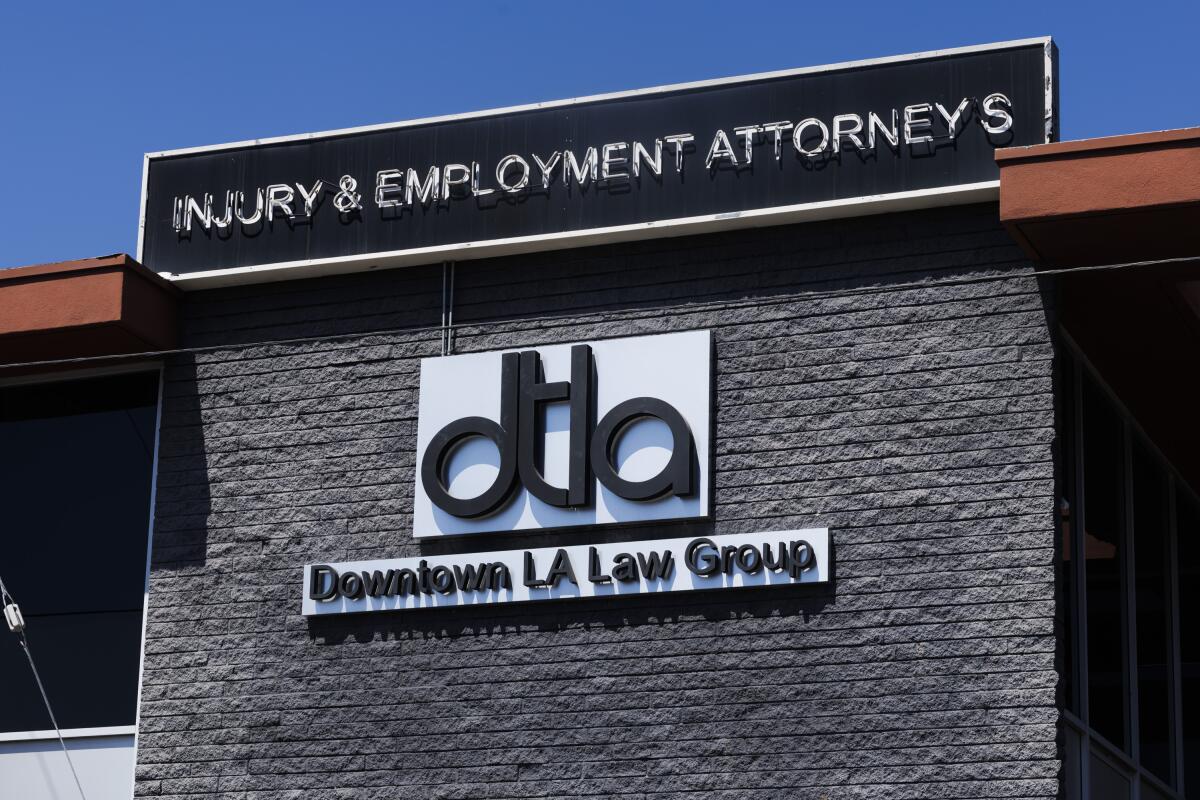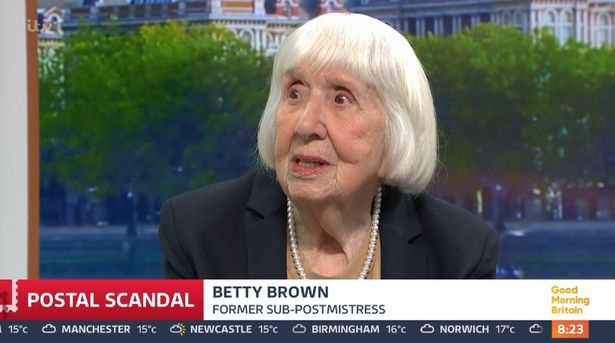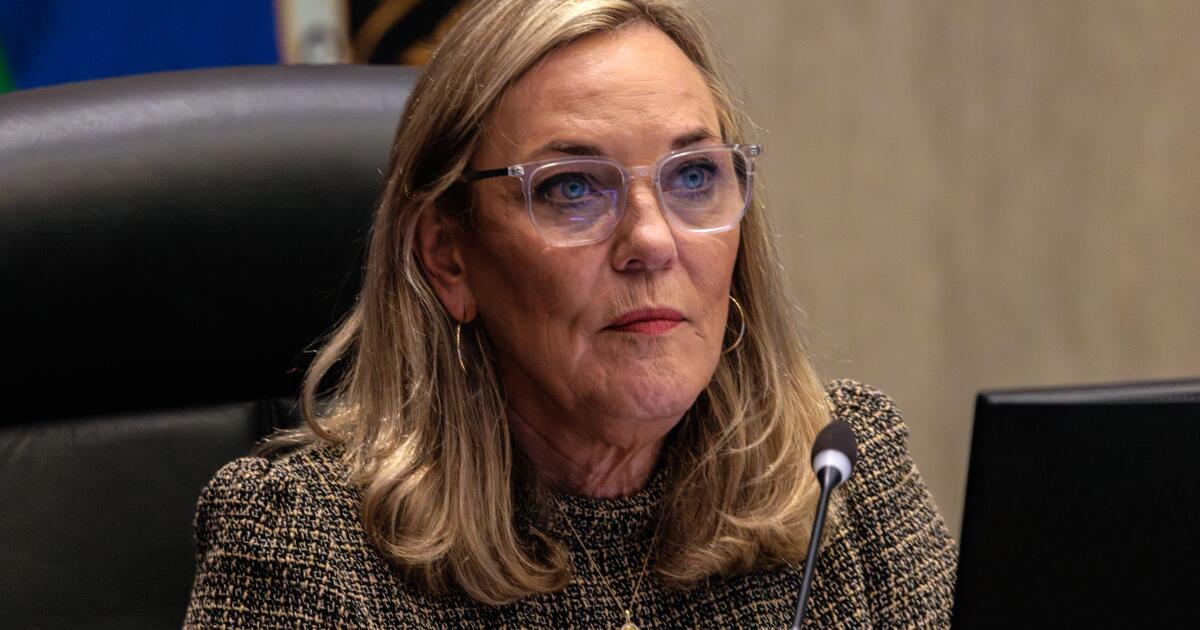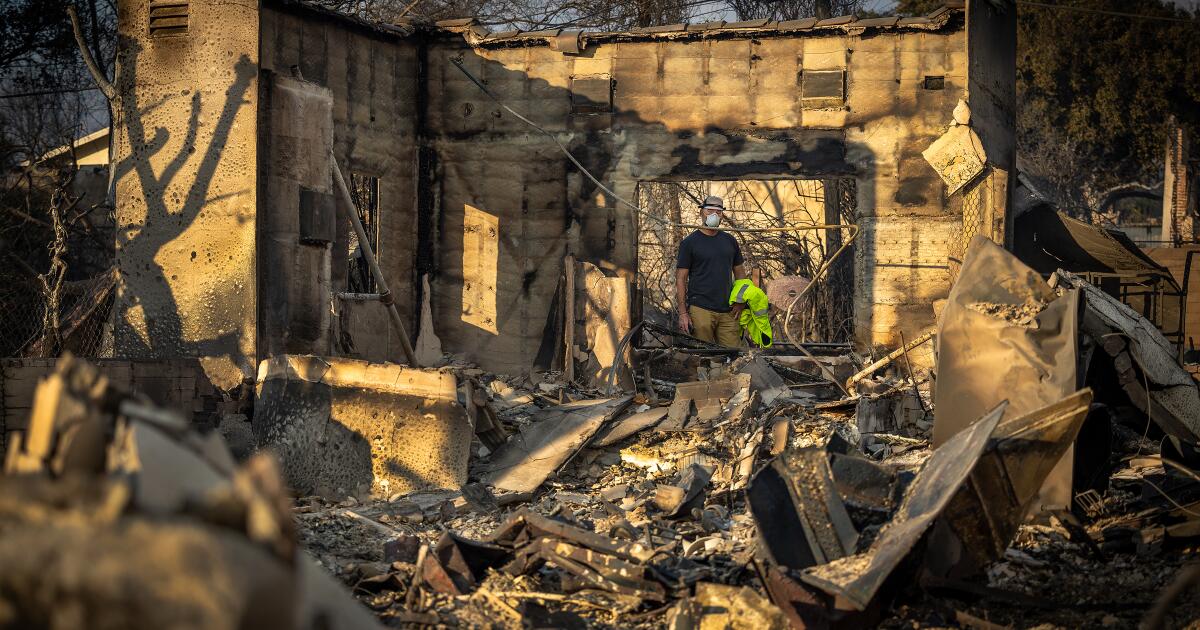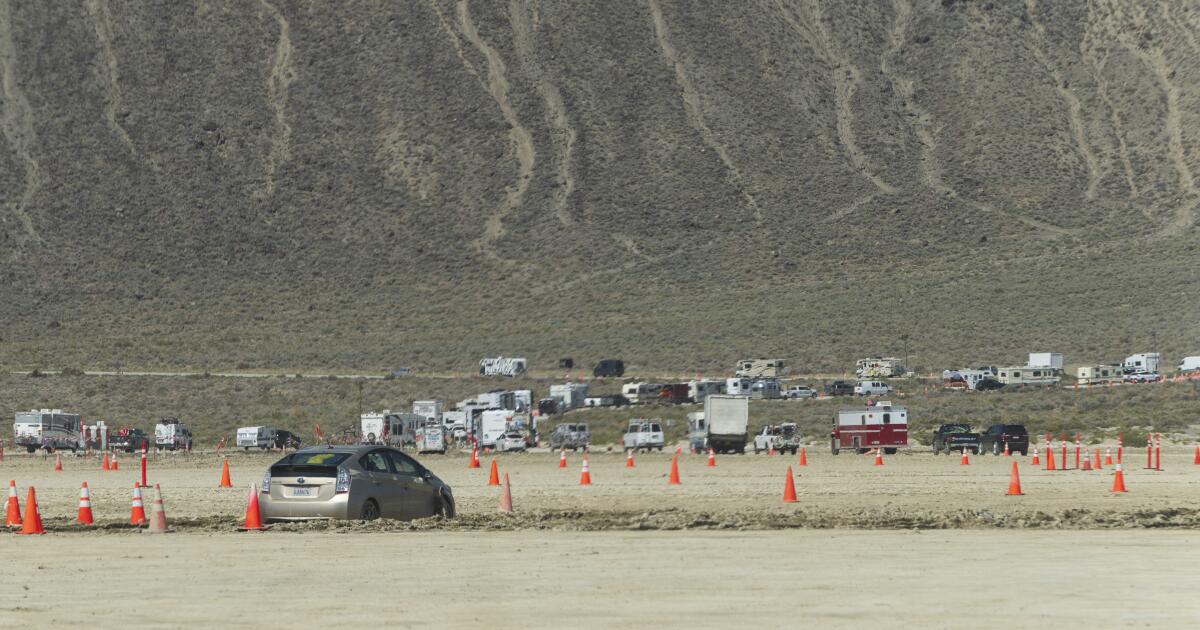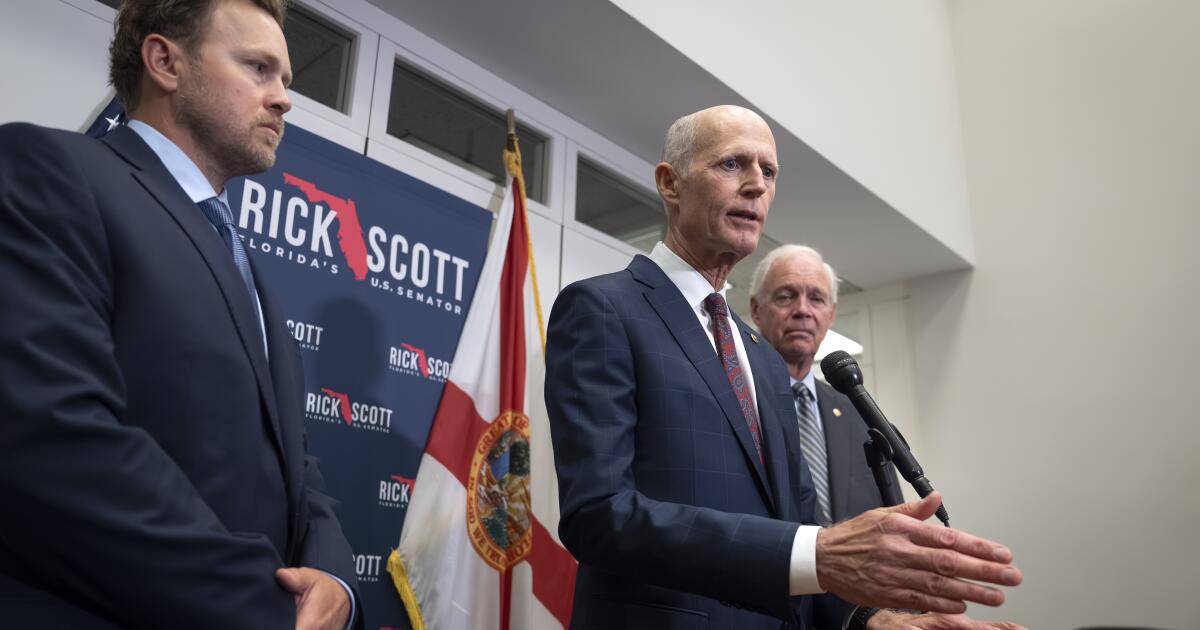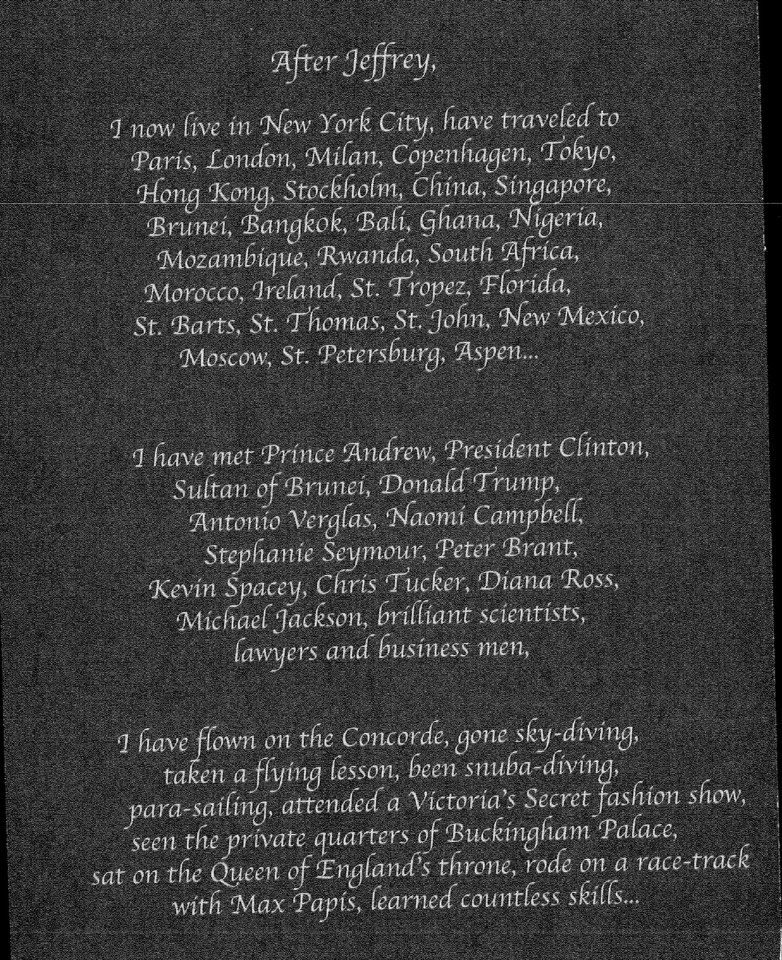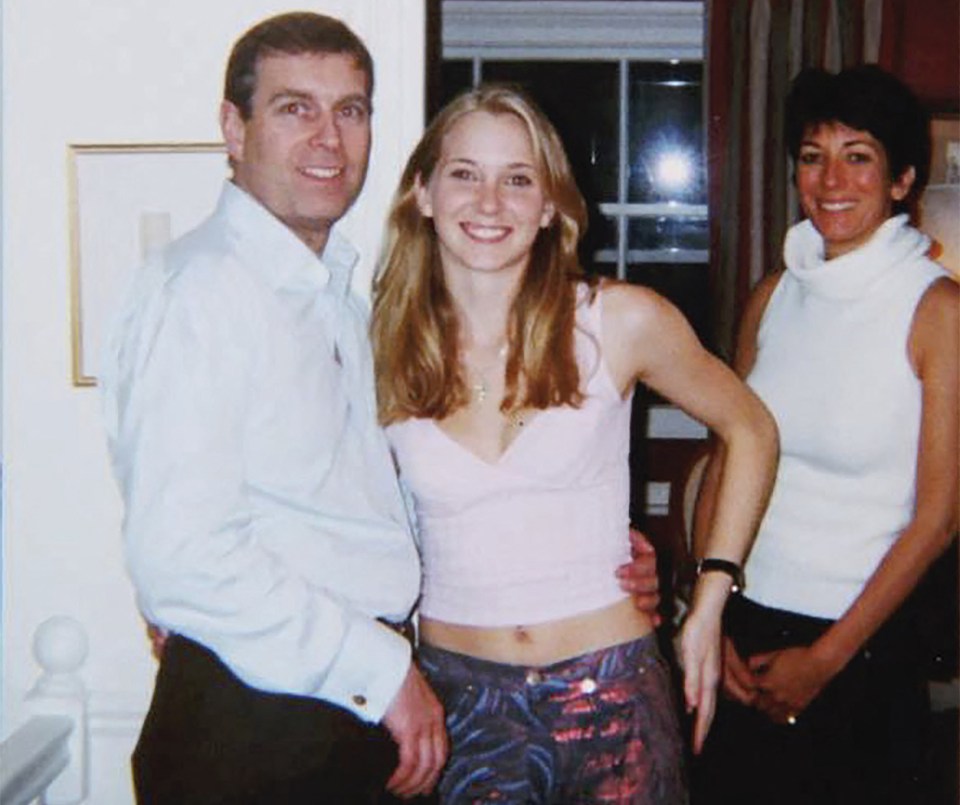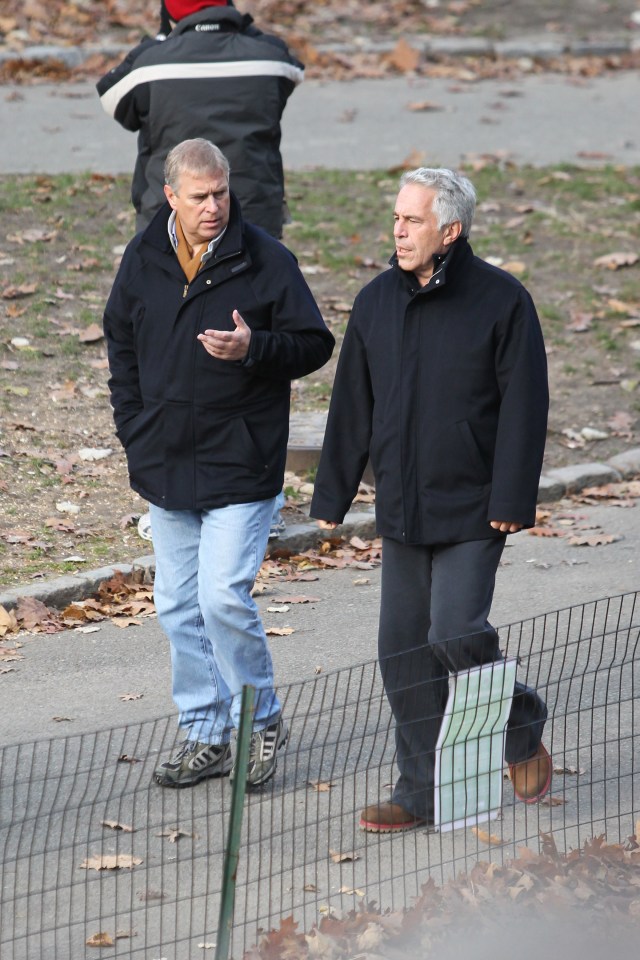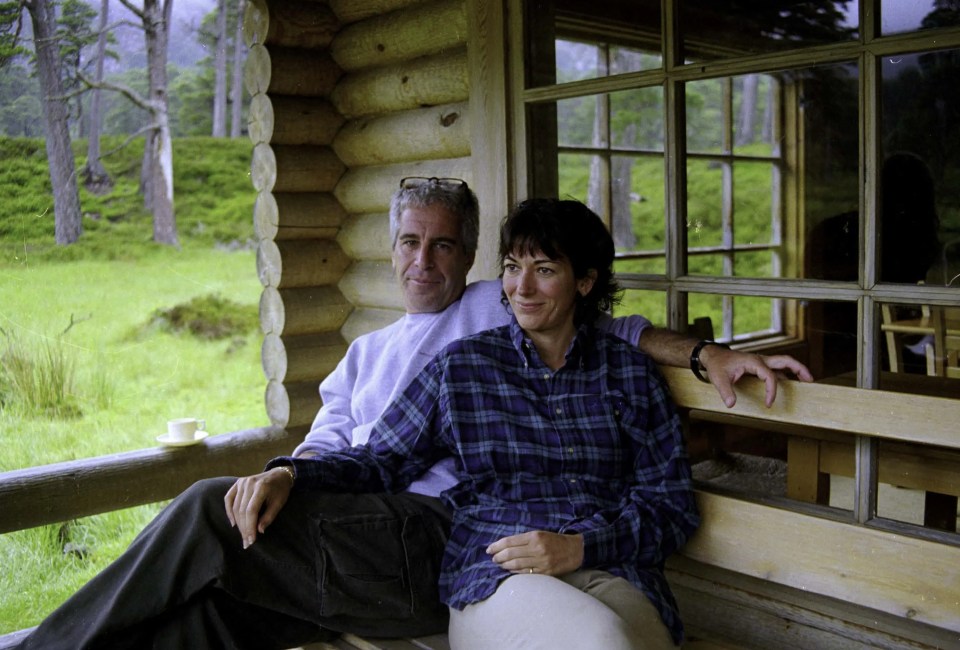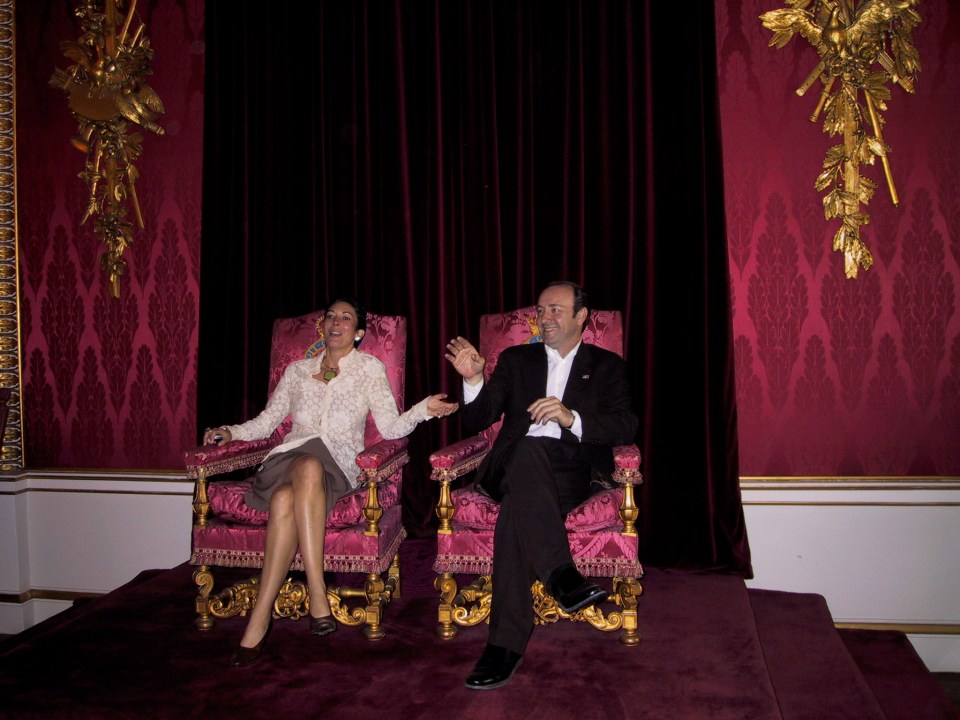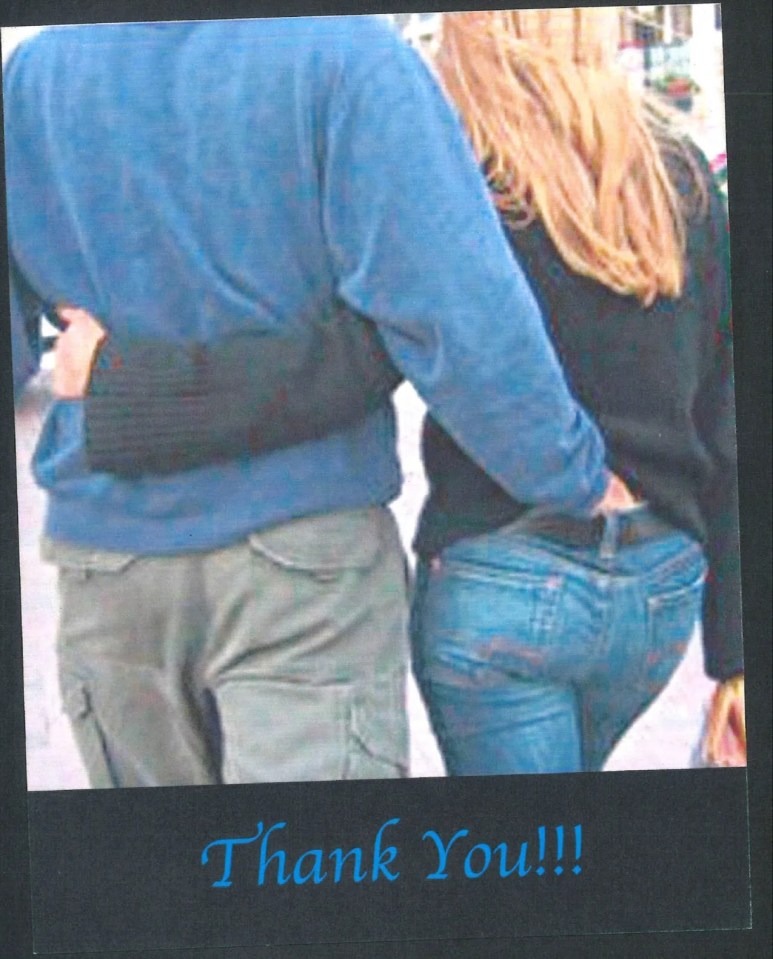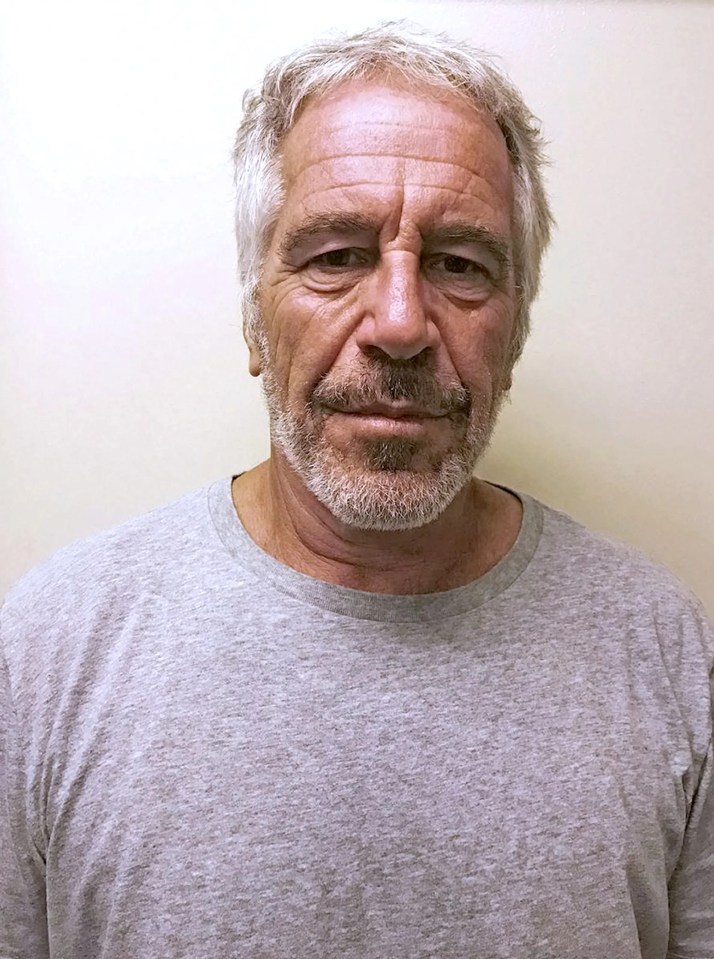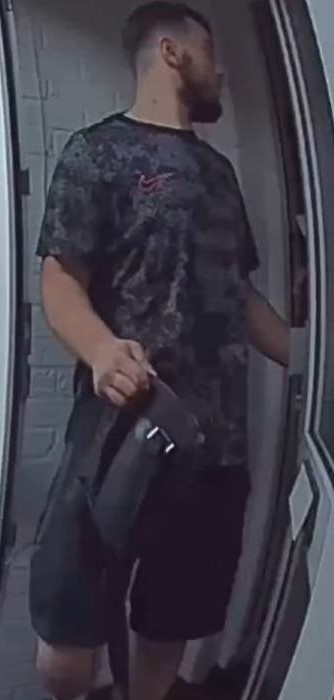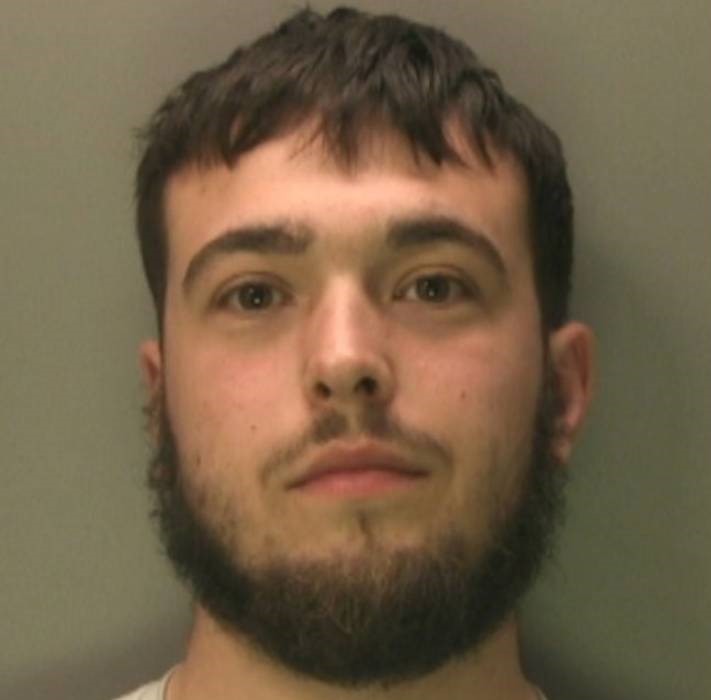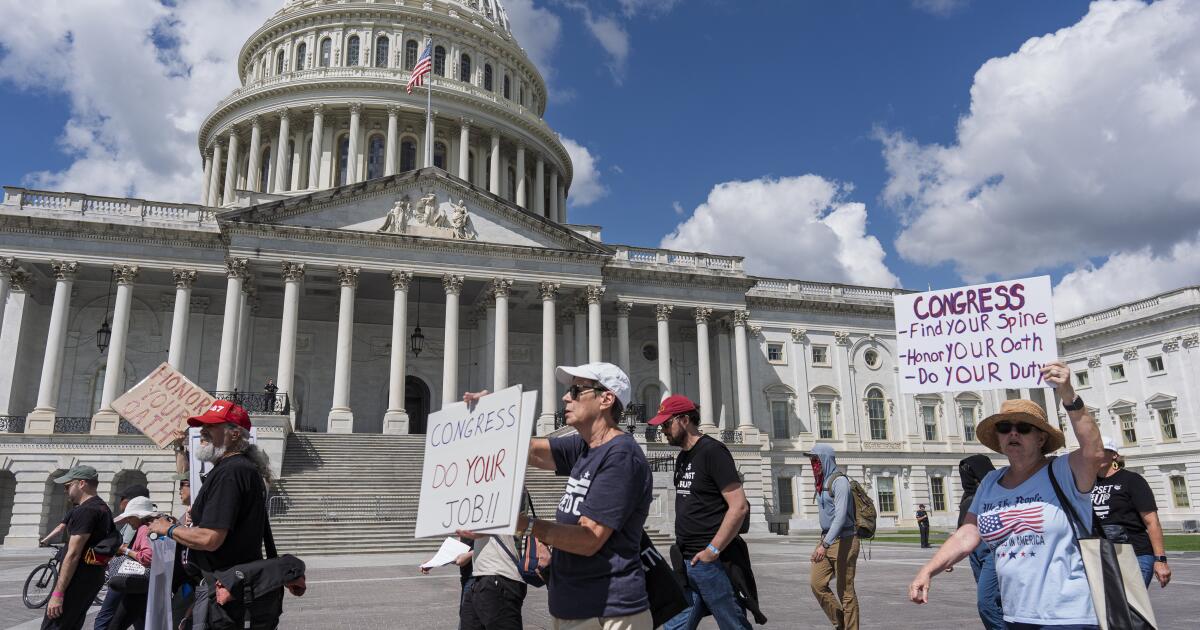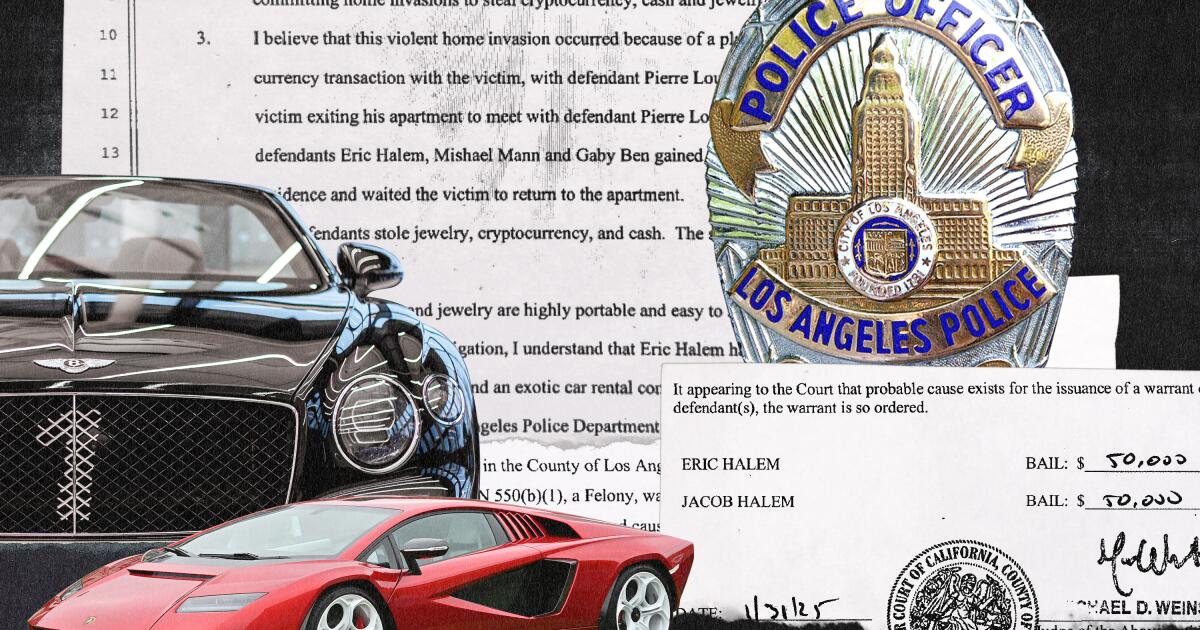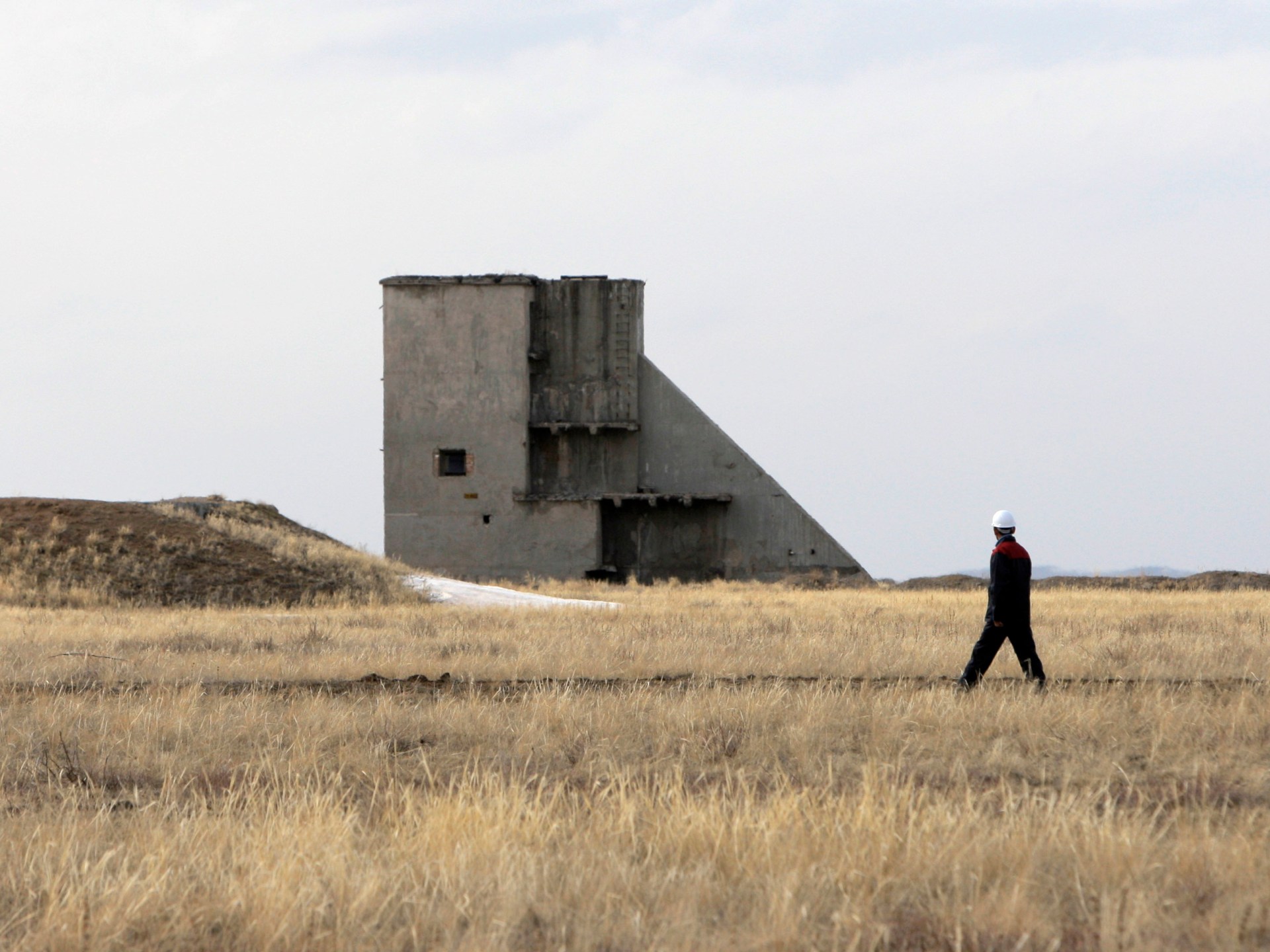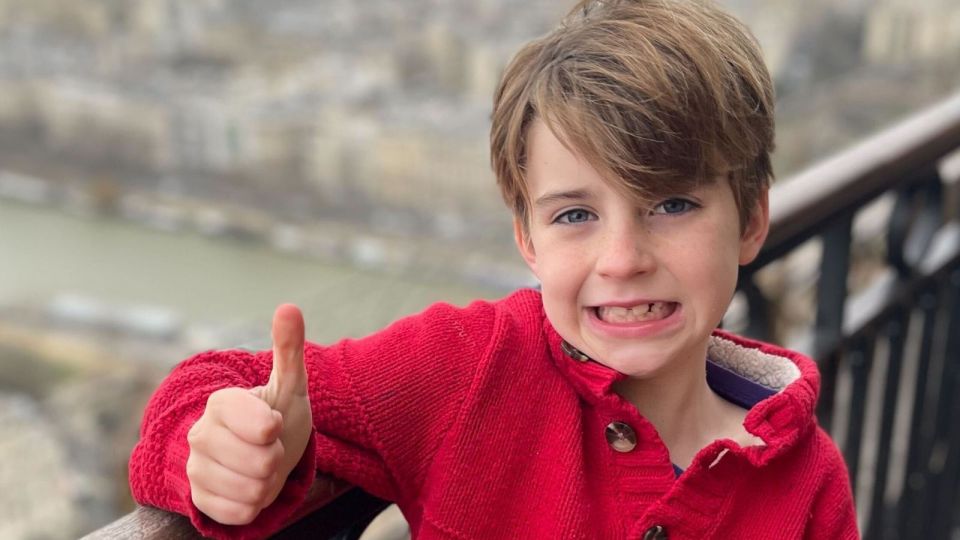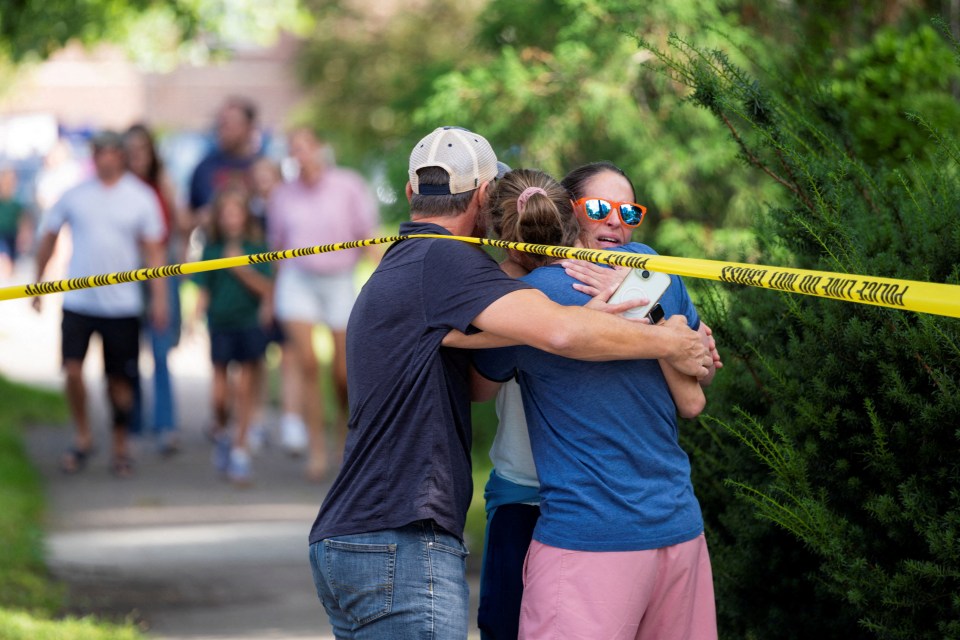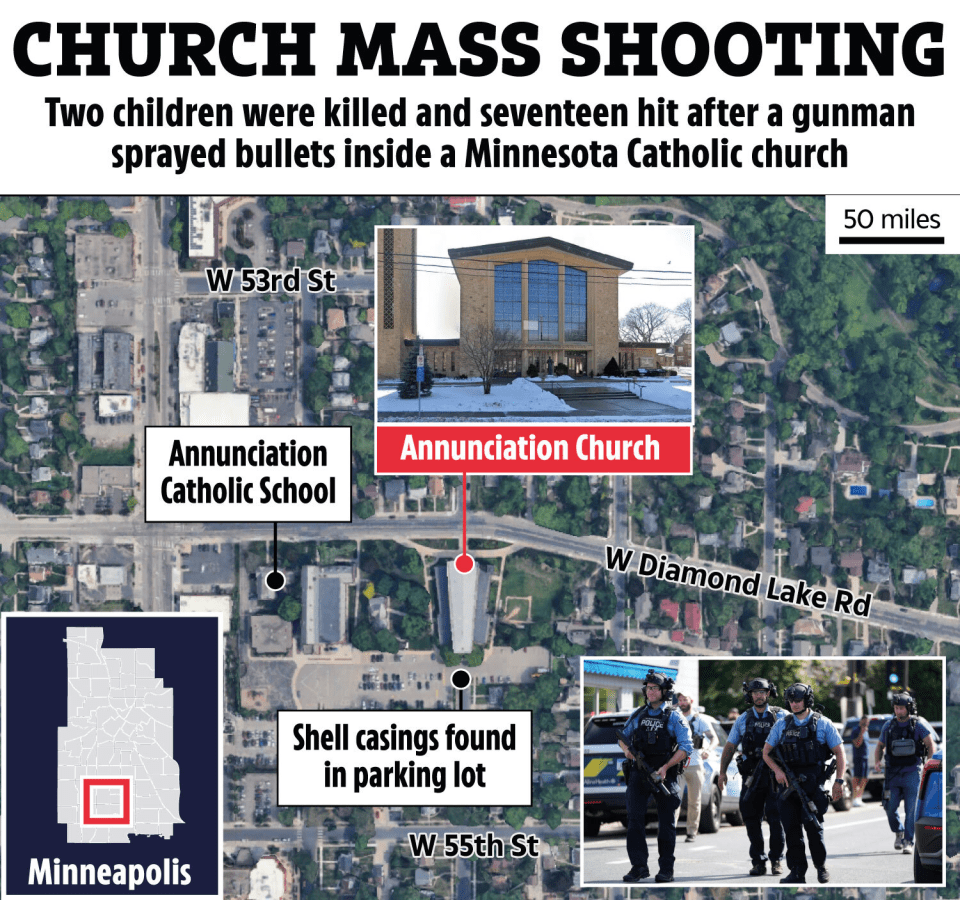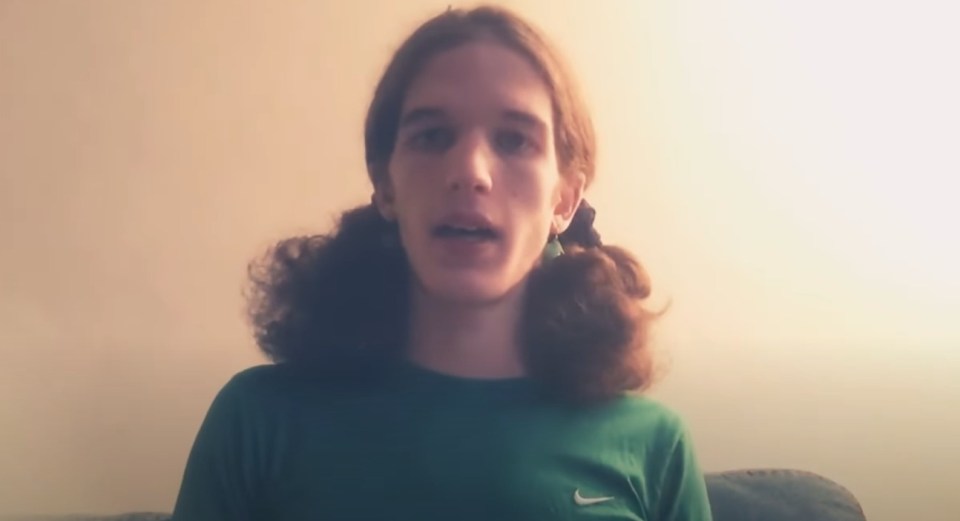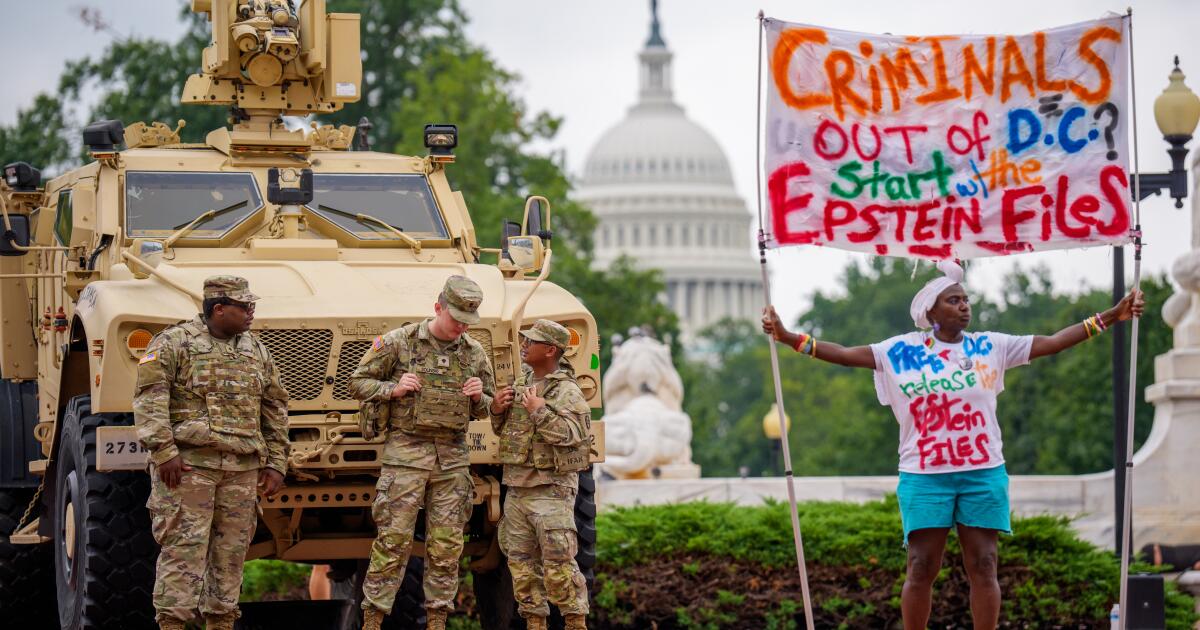In December 2021, Eric Benjamin Halem was riding high.
Beyond his day job as an LAPD officer, he was juggling several lucrative side hustles, business records and court filings show.
Private security. An app for aspiring actors trying to land auditions. And an exotic car rental company, Drive-LA, that was gaining a following among rappers, influencers and executives.
But Halem’s comfortable life soon began to unravel. He left his full-time position with the LAPD after coming under internal investigation, according to records submitted as part of a lawsuit. Earlier this year, state authorities charged him with insurance fraud.
Then, a few weeks ago, L.A. County prosecutors accused him of masterminding a home invasion robbery with a man with reputed ties to the Israeli underworld — part of what authorities say is a growing trend of criminals targeting victims for their cryptocurrency profits.
How Halem, 37, became embroiled with one of his alleged co-conspirators, Gaby (sometimes spelled “Gabby”) Ben, remains a mystery.
Ben, who has twice been convicted of fraud, was a close business associate of Moshe Matsri, or “Moshe the Religious,” whom authorities describe as an L.A. leader of the Israeli underground who had long operated in the San Fernando Valley and had ties to the Abergil crime syndicate, according to court filings.
In the early morning hours of Dec. 28, 2024, Halem, Ben and Mishael Mann, 20, made their way into an apartment building in Koreatown, LAPD Robbery-Homicide Det. Guillermo De La Riva wrote in a sworn declaration in favor of denying Halem’s bail.
Pierre Louis, 26, had arranged to meet up with the victim for a “digital currency transaction,” which was a ruse to allow the three other men to enter the building and wait for the victim to return, De La Riva wrote.
The men handcuffed the victim and a second person, De La Riva wrote, ordering them at gunpoint to transfer money from a cryptocurrency account and fleeing with $300,000 worth of cryptocurrency, cash and jewelry.
De La Riva said he believed that after Halem’s arrest, other alleged victims might come forward.
When LAPD detectives arrested Halem earlier this month, they obtained search warrants for the $2.1-million home he had recently moved into in Porter Ranch, a scenic neighborhood in the Santa Susana foothills. They also reportedly recovered at least one of his guns from the home of his former police partner.
Halem, who went by Ben professionally, has pleaded not guilty to kidnapping and robbery and remains in Men’s Central Jail after a judge denied his application for bail. His attorney, George G. Mgdesyan, declined to comment, saying he hadn’t yet reviewed the evidence against his client.
Halem has also pleaded not guilty in the state insurance fraud case. Ben, 51, is jailed on a federal immigration hold in Florida.
Louis, Mann and another defendant, Luis Banuelos, have pleaded not guilty to felony charges. Their attorneys declined to comment.
As LAPD detectives investigated the kidnapping and robbery, they took a closer look at Halem’s side businesses, according to two department sources — including whether his startup funding came from organized crime and whether his companies were a front for money laundering. The sources spoke on condition of anonymity to discuss an ongoing investigation.
In recent years, business was taking off at Drive-LA, which boasted a fleet of rare luxury vehicles for rent, including a 2020 Bentley Continental GT and a Lamborghini Urus, and had nearly 60,000 Instagram followers. With glowing media coverage and venture capitalists opening their checkbooks, Halem planned to open a second location in Phoenix.
He was co-hosting a podcast for car enthusiasts, and former associates told The Times that a reality show based on his life was in the works. On social media, he cultivated the image of a carefree young entrepreneur, with photos of himself posing on the steps of a private jet, at a Formula 1 race and courtside with NBA superstars Dwight Howard and Shai Gilgeous-Alexander.
Halem launched an app called kaypr in 2017 that matched aspiring actors “to available roles,” allowing them to audition remotely from anywhere in the world. For a security firm where he had a leadership role, he worked “music festivals, celebrity details, and large-scale events.” Among his clients was action film producer Randall Emmett, who has faced fraud claims and allegations of abuse toward women. Emmett has denied the allegations.
In a blog post, Halem described himself as a thrill seeker who has always chased “speed, precision, and a little bit of calculated chaos.”
According to an online biography, Halem grew up in Los Angeles and attended UC Riverside before joining the LAPD. He spent nearly half his 13 years on the force as a training officer and was qualified as a sharpshooter.
His last assignment was at West Valley Division, which patrols areas featured in crimes involving suspects with ties to Israeli organized crime, including the wealthy enclave of Encino. Several former colleagues who spoke with The Times described Halem as a solid if unremarkable officer.
In 2014, Halem was injured during an encounter with a suspect in the West Valley area who had holed up inside an apartment and pelted officers with objects. An LAPD review board found that Halem’s decision to fire a beanbag shotgun at the suspect was in line with department policy.
By the time he left the LAPD in 2022, Halem was pulling in $188,500 in salary and benefits, according to the Transparent California database.
And his other businesses were apparently far more lucrative than his day job. In an interview with Internal Affairs detectives investigating him for insurance fraud, Halem boasted that he was raking in more than $1 million in profit annually from Drive-LA, according to a department source who reviewed the Internal Affairs file and was not authorized to discuss the matter.
Halem was also targeted by numerous lawsuits, one of which cited a WhatsApp conversation in which an LAPD sergeant said that Halem’s “business smells dirty” and suggested that there were other LAPD officers who were “involved in his business dealings.”
“[If] there is any misconduct on their part they will be held accountable,” the sergeant wrote in the WhatsApp exchange, referring to the other officers.
It’s not clear whether the LAPD investigated whether other officers were involved. The department did eventually clear Halem of the insurance fraud allegations. But his alleged misdeeds had come to the attention of the state Department of Insurance, which charged both him and his brother, Jacob Halem, with misrepresenting details in a roughly $200,000 insurance claim related to a Bentley crash in January 2023. The case is pending.
After leaving his full-time LAPD job, Halem worked as an unpaid reserve officer. In March, he was stripped of his police powers after he was charged in the insurance fraud case.
Ben, who moved to the San Fernando Valley from Israel as a young adult, worked in real estate and was a partner at his late mother’s restaurant.
Federal prosecutors described him as a flashy high roller with an affinity for high-end watches. His Israeli mafia connections allowed him to launder money through Jewish-owned businesses across the Valley, prosecutors alleged in documents filed in the case.
Ben was deported after each of his fraud convictions, federal court records show. In one of the cases, prosecutors alleged that he orchestrated a so-called bust-out scheme, recruiting people to open bank accounts on his behalf in exchange for a small fee.
He and his brother, Amin Ben, were also accused of defrauding senior citizens by entering their homes disguised as HVAC repairmen and then photographing their driver’s licenses and bank statements.
Based on wiretaps described in a federal sworn affidavit, federal investigators believed the brothers could move freely in and out of the country, despite their legal troubles, because of Amin Ben’s connection to an official at the Israeli Consulate who was “able to facilitate and issue travel documents.” Prosecutors also alleged that the brothers were captured on a recording threatening to kill the Israel-based family of an LAPD detective investigating one of the federal cases.
The check-cashing business that Ben ran with Matsri, the alleged Israeli crime boss, in an Encino strip mall was a front for alleged fraud schemes, according to a declaration filed in court by an LAPD Major Crimes detective.
Investigators determined that the pair bought more than 230 airline tickets, worth more than $600,000, using phone credit card approval codes and then resold the tickets to local Israelis at discount rates, an FBI agent wrote in a sworn affidavit.
When they arrested Ben and Matsri in October 2010, authorities seized 16 high-end watches and a handgun from Ben’s home.
In 2015, Matsri was sentenced in a separate federal case to 32 years in prison for drug trafficking, money laundering and extortion.
Land records show that Ben was living in a glitzy mansion in the Hollywood Hills, where neighbors said they often saw him driving a black Rolls-Royce. The mansion’s owner sued him after he stopped paying rent for five months, eventually racking up a $150,000 tab, court records show.
Ben continued to live at the residence until moving out in March.

